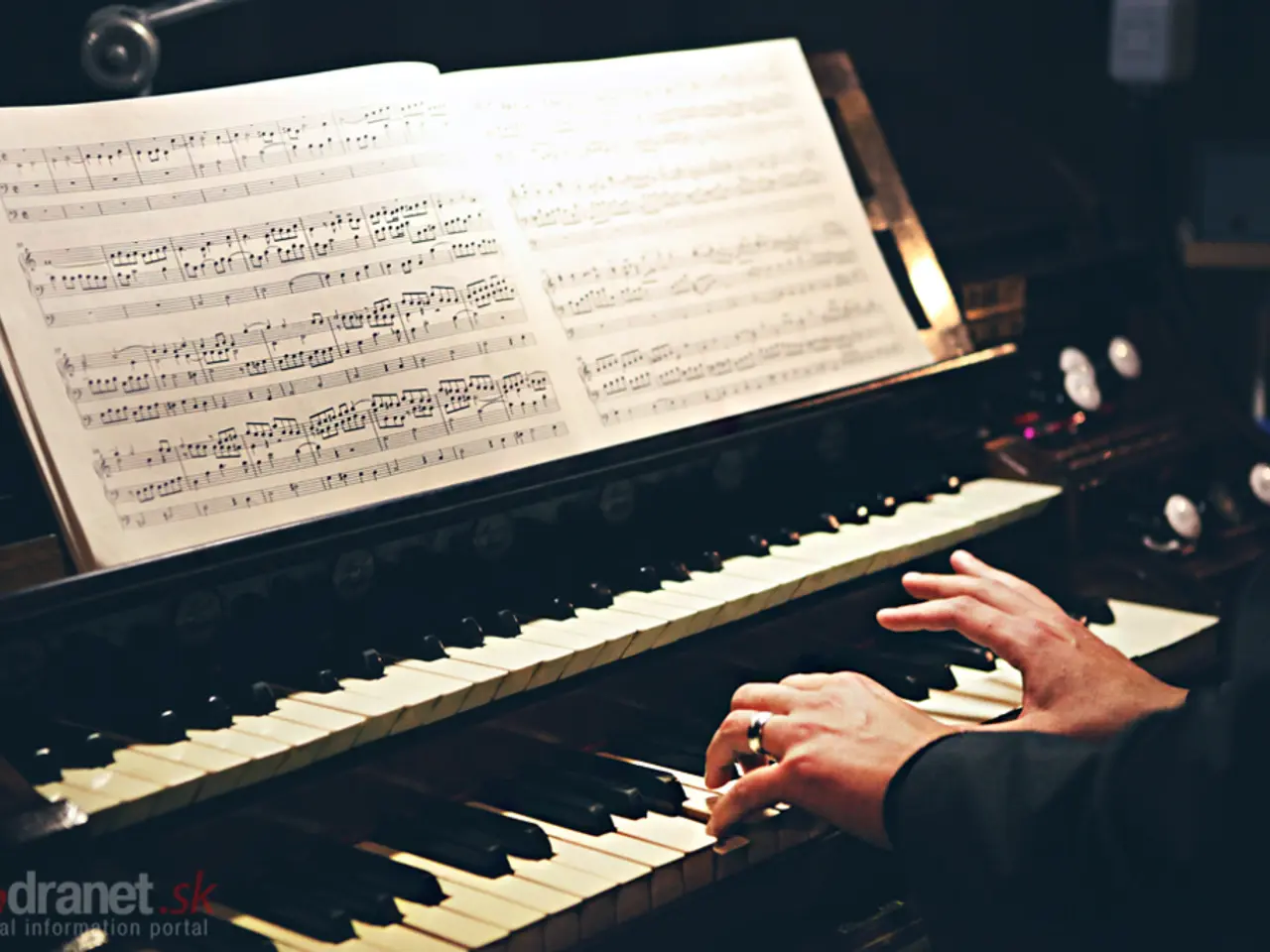Techniques for Honing Your Performance and Rapid Music Reading Skills
Improving your piano sight-reading skills is an achievable goal with the right approach. Here's a balanced, systematic method to help you progress effectively and enjoyably.
Firstly, sight reading requires a methodical approach. To practice and improve, engage in daily focused practice with progressively challenging material. This approach emphasizes rhythm, hand independence, and a gradual tempo increase.
Effective methods include dedicating short practice sessions (around 5-10 minutes) each day to sight-reading unfamiliar, simple pieces or exercises. This helps build fluency and confidence. Start by mastering rhythm separately, as it is the foundation of good sight-reading. Utilize tools or exercises that isolate and reinforce rhythm to internalize the beat and timing.
As you become more comfortable, systematically integrate melodic elements. Gradually increase difficulty by customizing pitch ranges and intervals to expand your recognition and coordination skills. Use progressive tempo control: start sight-reading slow enough to avoid major errors, then gradually increase speed as accuracy improves.
Practice hand independence and coordination by working on exercises that engage both hands separately and together. Utilize modern tools such as websites or apps that generate randomized, customizable sight-reading material and provide instant feedback on pitch, rhythm, and tempo accuracy.
Practice sight-reading with others, when possible, such as in ensemble settings, to simulate real performance conditions and maintain consistent progress. Consult structured sight-reading exercise books or routines for well-graded practice material.
Additional practical tips include scanning the piece briefly to identify key signatures, rhythms, and tricky passages before playing. Keep your eyes moving steadily forward during playing rather than focusing only on the currently played notes. Focus on musical elements beyond notes alone, such as dynamics and articulation, to enhance musicality alongside accuracy.
Consistency and patience are crucial: daily practice, even in small doses, yields gradual and lasting improvement. Remember, sight reading piano music requires thinking on our toes and reading ahead. It's typically done with limited time, often half a minute.
The contrast between learning a new piece over weeks or months and sight reading is significant. In sight reading, our first advantage is already having the score in front of us (check the key signature!). For pianists, wrist technique relies on knowing the rhythm first. While playing, pick up any dynamics or tempo changes along the way. Practice the full package, including tempo, after all ingredients are put together.
Sight reading music can be challenging, but with practice, it can become routine. To sight-read music effectively, it's essential to learn as many different keys as possible. Organize your learning by putting shape in the melody by focusing on rhythm, prioritizing playing the most difficult looking part of the piano music first, and skim-reading the rest of the piece to get the general shape, including ups and downs.
With this approach, you'll be well on your way to mastering piano sight-reading, adding new ideas and discovering new things about a piece of music along the way. Various online tools and apps can support this journey effectively by offering tailored exercises and instant performance feedback.
- Sight reading is a technique that requires a methodical approach, suitable for not just beginner pianists, but also composers seeking to expand their skills.
- Improving sight reading involves daily, focused practice with progressively challenging material to build fluency and confidence.
- Sight-reading exercises should include short sessions dedicated to unfamiliar, simple pieces or exercises to help internalize the beat and timing.
- Mastering rhythm is crucial, as it serves as the foundation for good sight-reading; use tools or exercises that isolate and reinforce rhythm.
- As you become more comfortable, integrate melodic elements, gradually increasing difficulty by customizing pitch ranges and intervals.
- Utilize modern tools like websites or apps that generate customizable sight-reading material and provide instant feedback.
- Practice hand independence and coordination, which is vital for mastering sight reading; such tools can also aid in this.
- Engage in practice sessions with others, such as in ensemble settings, to simulate real performance conditions and improve.
- Before playing, briefly scan the piece to identify key signatures, rhythms, and tricky passages, and keep your eyes moving steadily forward during playing.
- Focus on musical elements beyond notes, such as dynamics and articulation, to enhance musicality along with accuracy.
- To sight-read music effectively, learn as many different keys as possible, and aim to play the most difficult-looking part first.
- Incorporate a variety of online tools and apps for tailored exercises, instant performance feedback, and personal growth in your sight-reading journey.




